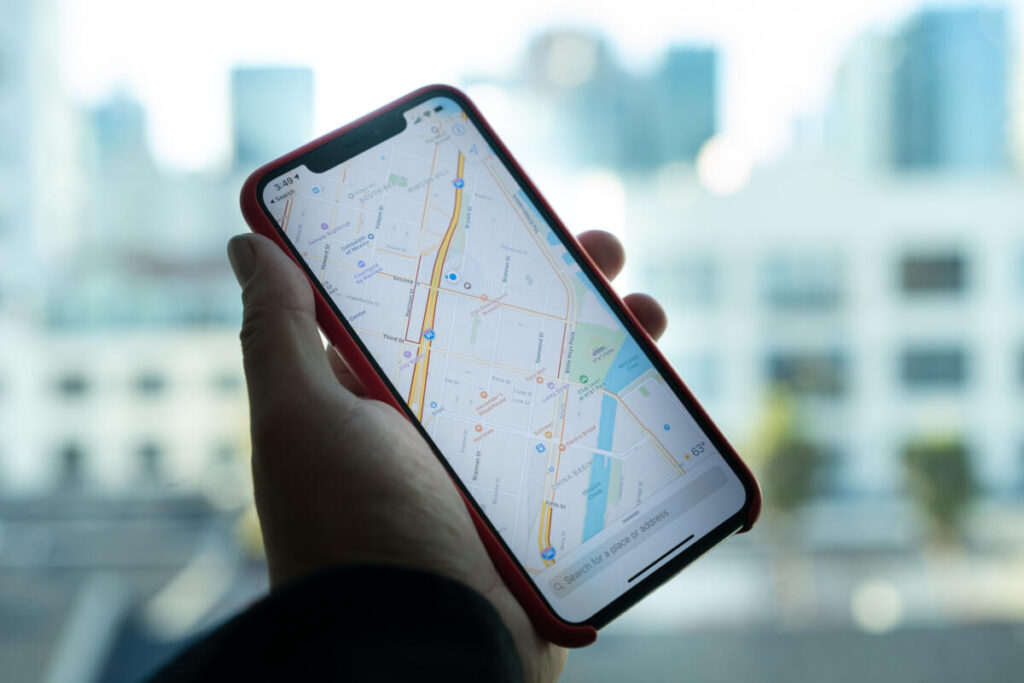Have you been annoyed by the fact that some corporate giants constantly know your location because they track your phone everywhere you go, or some undesirable ads keep popping out on your screen when you’re browsing the Internet? Well, there is some good news for you! You are about to learn some valuable and practical ways that can help you not only know how to protect yourself from unwanted location tracking but also how to use it to your advantage.
How are we being tracked
As you already know, your smartphone is an ideal place for advertisers to advertise their products. However, these advertising agencies should first know where they can find their target audience, that’s why they gather useful information about their consumers through their smartphone data. Now, you might be wondering, “How can they do that?” Well, advertisers thought of a very smart way to do so. They first had to understand who are the people that have the power of information, the source that they can use to learn more about their target consumers. Very soon, they realized that app developers are the ones that can give them what they are looking for. After that, they had to figure out how to make an offer that app developers cannot refuse. So, They created software developer kits, shortly called SDK, that was a game-changer for developers. SDK was not only free but also saved the developer’s time. They were so efficient that they became inseparable tools for developers. What are some of the examples of SDKs?
By using Facebook’s login SDK, for example, developers can easily enable the users of their apps to sign up by using Facebook accounts. If a developer wants to create an app that has map data, they will use Google’s Map SDK. In the world without SDKs, developers would have to build all that from scratch, which would cost more money and would take a lot of time.
Once the SDK is integrated into the app, they can collect data from whoever is using that app. It has the power to extract data of any users without the user’s knowledge or consent and sends it to a third party – the advertisers who get this data for free. The more users use the app, the more data SDK can extract and send it to advertisers.
7 Location Tracking Tips and Tricks
Now that we understood how tracking works, let’s see some of the tricks you can use to manage your location tracking options. The best trick is to fake your location, which you can check on virtuallocation.com where you can find a variety of simplified instructions.
iPhones
1. Shutting off location tracking completely

By following these steps, you will gain full control but lose a lot of useful options on your iPhone.
- Go to the “Settings”
- Go down to the “Privacy”
- Tap on “Location Services”
- Turn “Location Services” switch off
2. Shutting off location tracking only for some apps
If you tried the first trick, you would soon realize that many features are lost and your user experience decreased. If you now think that you should allow access to your location to some apps, this is how you can do it:
- Go to the “Settings”
- Go down to the “Privacy”
- Tap on “Location Services”
- Find and tap the app that you want to manage
- Choose the offered preference
So the first option “Never” will never send your location to the chosen app. The second option “While Using the App” will only send the location to the app while you are using it. And the last option “Always” means that the app will always have access to your location.
3. Shutting off “Significant Locations”
Let’s say that every morning you go to the same coffee shop to grab your coffee and then to your office. Maybe you also frequently go to your grandmother for freshly baked cookies. The coffee shop, the office, and your grandmother’s place become “Significant Locations”. Apple, through your iPhone, was tracking your location and memorized all the common places you’ve been visiting and organized it under one group called “Significant Locations”. This is how you can stop it:
- Go to the “Settings”
- Go down to the “Privacy”
- Tap on “Location Services”
- Go to “System Services”
- Go to “Significant Locations” and just tap it off
4. Shut off location-based notifications
Did you ever get iAds and suggestions of the best places in your location? If so and it was bothering, this is how you can turn it off:
- Go to the “Settings”
- Go down to the “Privacy”
- Tap on “Location Services”
- Go to “System Services”
- Tuggle of “Location-Based alerts”
Android devices
1. How to stop Google from tracking your device:

- Go to “Settings”
- Go to “Google settings”
- Go to “Google accounts“
- Go to “Data & personalization”
- Tap on “Web & App Activity to toggle it off
- Go down to “Location History” and toggle it off too
Have in mind that android devices have somewhat different interfaces and steps to reach the previously mentioned steps but it would be similar so don’t worry about getting lost.
2. How to delete location history on Twitter
Twitter makes it easy for you to do it:
- Go to your personal icon
- Go to “Setting and privacy”
- Go to “Privacy and safety”
- Go to “Precise location”
- Uncheck the box “Add a location to my Tweets”
3. How to turn off location on Facebook

- Go to “Settings & Privacy”
- Choose “Settings”
- Go to “Location”
- Tap “Location Access”
- Tap “Location services”
- Go to “Permissions”
- Toggle off “Locations”
Hopefully, you learned how to manage your location data and how to take full control of what you are giving away and what you want to keep as private. Data regulations are changing rapidly in recent years as people are becoming more aware of its significance so, it’s going to be interesting to see how will law regulators act to protect us in the future from unwanted data traffic.
Related Posts:
- What You Should Know When Playing at Online Casino…
- 7 Useful Free Fire Tips & Tricks Both Beginners and…
- Ironman Mode: Tips and Tricks Every RS3 Beginner Should Know
- 7 Facts You Need to Know Before Using Phone Tracking…
- All You Need to Know About Professional KPI Tracking…
- 9 Carpet Cleaning Tips & Tricks to Try at Home - 2024 Guide







